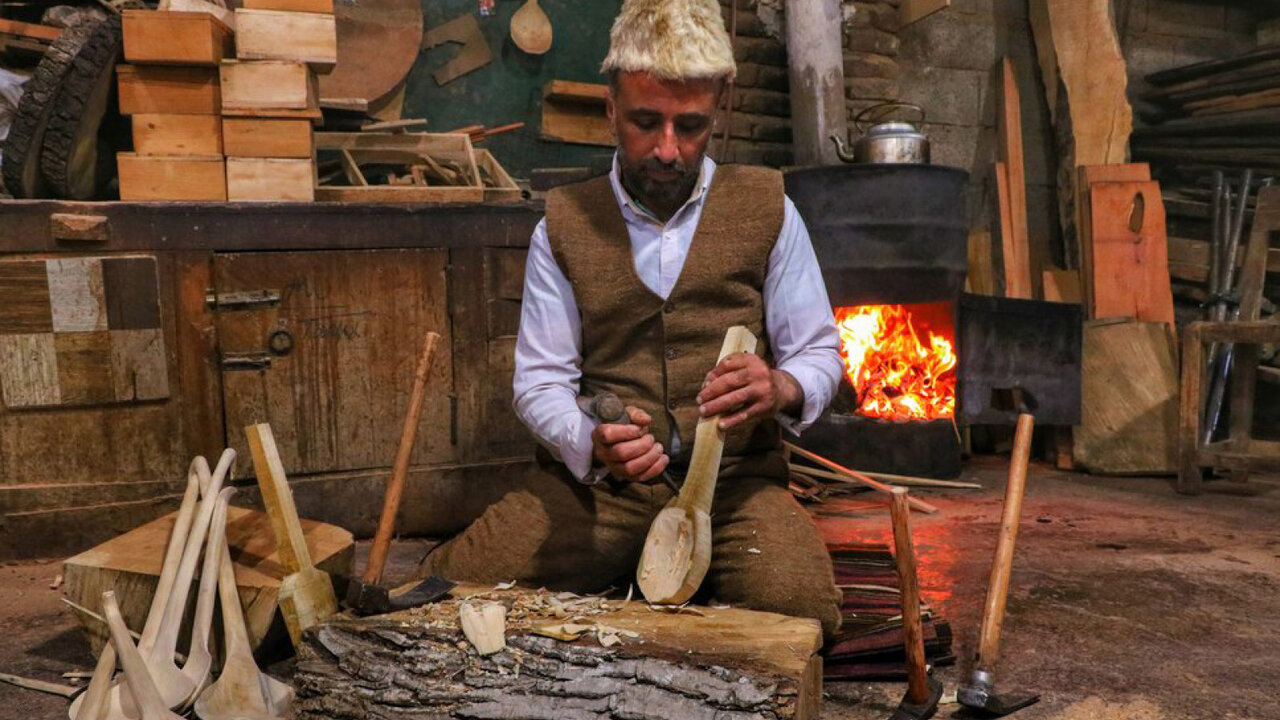Iranian handicrafts: Chootashi

TEHRAN –In the regions by the Caspian Sea, Chootashi, Lactashi or wood craving are some of the original handicrafts. The word consists of two parts, "Cho" and "Tarash". A Cho is a short form of Choob or wood, and a Tarash is a carving.
Similar to wood carving, this art is often used to make tools and utensils that are used in daily life. A plentiful and diverse supply of wood in the jungle of Tabarestan, which is the old name for Mazandaran, has enabled wood objects to be made throughout history.
Mazandaran's Chootashi art has been used to create tools and utensils such as Kacheh, a wooden spoon, Ketra, a wooden ladle, and Joleh, a jug made with a wide opening and thin neck, used to keep milk and diary entries. The Kelez is also a wooden utensil that is used to mix or as a measure cup instead of a ladle.
Various cities in Mazandaran practice this art/craft, including Noor, Chamestan, Amol, Babol, Savadkuh, Sari, Behshahr, Neka and others. Tabarestan's history is filled with stories about people practicing Chootash, or Chootashan.
The historians report that people invited itinerant or non-itinerant Chootashans, coppersmiths, and tailors to make the objects they desired in their homes. Until the job was completed, they were treated warmly. Celebrations like this were held before weddings in a more pleasant manner.
Chootash was one of the tools used by Mazandaran folk in their prayers and vows. To bring blessing and goodness to their lives, Chootashan gave their best or first products to their village's holy shrines. After a prayer was answered, they donated a carved utensil to the shrine.
The craft uses wood from trees such as Maple, Box, Beech, Oak, Walnut, European Ash, Elm, Plane, Ulmus Glabra, Parrotia and Zelkova.
Sandwiched between the towering Alborz mountain range and the Caspian Sea, Mazandaran has a rich yet turbulent history. An early civilization flourished at the beginning of the first millennium BC in Mazandaran (Tabarestan).
Its insecure eastern and southeastern borders were crossed by Mongol invaders in the 13th and 14th centuries. Cossacks attacked the region in 1668 but were repulsed. It was ceded to the Russian Empire by a treaty in 1723, but the Russians were never secure in their occupation. The area was restored to Iran under the Qajar dynasty.
The northern section of the region consists of lowland alongside the Caspian and upland along the northern slopes of the Alborz Mountains. Marshy backlands dominate the coastal plain, and extensive gravel fans fringe the mountains. The climate is permanently subtropical and humid, with very hot summers.
ABU/
Leave a Comment